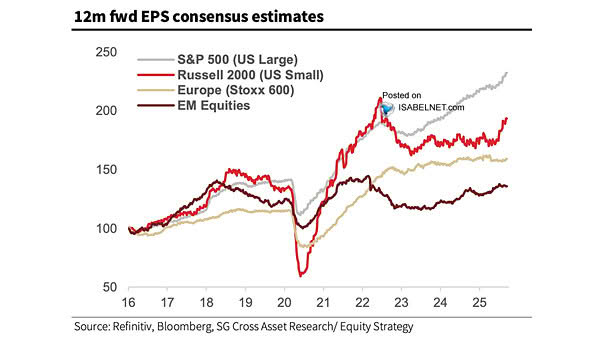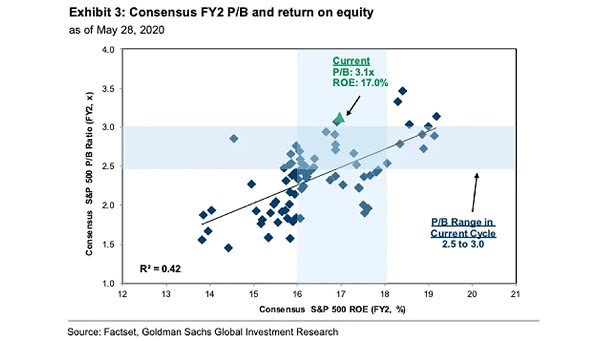S&P 500, Russell 2000, Stoxx 600 and EM Equities – 12-Month Forward EPS Consensus Estimates
S&P 500, Russell 2000, Stoxx 600 and EM Equities – 12-Month Forward EPS Consensus Estimates Market leadership is widening. U.S. small-caps are catching up fast as EPS growth fires up in both the S&P 500 and Russell 2000—a clear sign the rally is broadening beyond the tech giants. Image: Societe Generale Cross Asset Research


